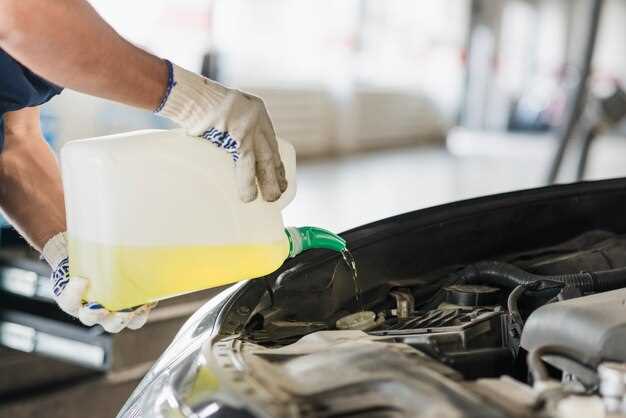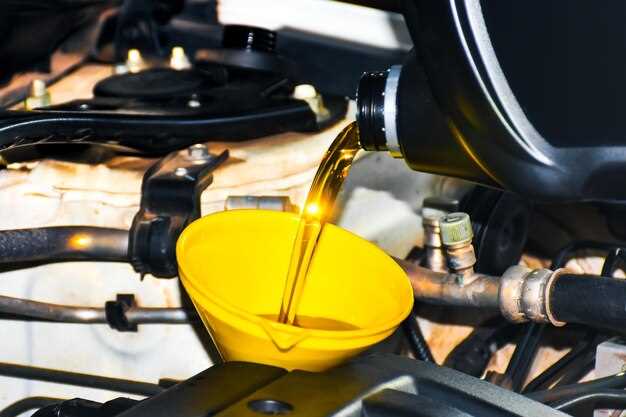
Maintaining your boat is essential to ensure optimal performance and longevity. One of the key components of regular service is changing the oil, which plays a vital role in keeping the engine running smoothly. Neglecting this important task can lead to costly repairs and reduced efficiency. This guide will provide you with a clear understanding of the steps involved in changing your boat’s oil and the timing for when to do it.
Changing your boat’s oil isn’t just a routine chore; it is a crucial aspect of engine maintenance that can greatly influence the lifespan of your vessel’s mechanical systems. By following the correct procedures, you can avoid common pitfalls and ensure that your engine operates at its best. In this guide, we will outline the necessary steps, tools, and best practices to help you navigate the oil change process with confidence.
Additionally, knowing the right time to change your oil is just as important as the process itself. Different factors, such as the type of oil used, operating conditions, and engine hours, can dictate the frequency of oil changes. We’ll discuss these factors in detail to help you create a personalized maintenance schedule tailored to your specific boating needs. With the right knowledge and preparation, you’ll be able to provide your boat with the care it deserves.
Essential Tools and Materials for an Oil Change

Changing the oil in your boat is a crucial service that helps maintain engine performance and longevity. To ensure a smooth process, it is essential to gather the right tools and materials beforehand.
First, you will need an oil filter wrench. This tool is designed to remove the oil filter, which can often be tight and difficult to unscrew by hand. A proper wrench will make the task easier and prevent damage to the filter.
The next key item is a drain pan. This container is necessary for catching the old oil as it drains from the engine. Make sure it has a sufficient capacity to hold the used oil, and choose one with a spout for easy pouring.
You’ll also require a socket or wrench set to remove the oil drain plug. Depending on your boat’s engine, the size may vary, so having a complete set will ensure you have the correct fit.
Oil is, of course, a critical material for the change. Ensure you have the right type and viscosity recommended for your boat’s engine. Consult the owner’s manual to identify the specific oil you should use.
Additionally, having an oil filter replacement is vital. Always replace the oil filter during an oil change to avoid contaminating the new oil with debris from the old filter.
Don’t forget to have a funnel on hand. When adding new oil, a funnel will help pour it without spilling and ensure you add the correct amount to the engine.
Lastly, consider safety gear, such as gloves and goggles, to protect your hands and eyes from splashes or oil residue. Keeping your workspace organized and clean will contribute to a safe and efficient oil change process.
Step-by-Step Process for Changing Boat Oil
Changing the oil of your boat is an essential maintenance task that ensures your engine runs smoothly and efficiently. Follow these detailed steps to successfully complete the service.
-
Gather Necessary Supplies:
- New oil (consult your owner’s manual for the correct type and quantity)
- New oil filter
- Oil change pump or siphon
- Wrenches and screwdrivers
- Oil catch pan
- Funnels
- Cleaning rags
-
Prepare Your Boat:
- Ensure the boat is on a stable surface and the engine is cool.
- If necessary, use a boat stand to secure the boat safely.
-
Remove Old Oil:
- Locate the oil drain plug, typically found at the bottom of the oil pan.
- Place the oil catch pan beneath the drain plug.
- Remove the drain plug and allow the old oil to fully drain into the pan.
-
Change the Oil Filter:
- Using an oil filter wrench, carefully remove the old oil filter.
- Before installing the new filter, apply a small amount of new oil to the rubber gasket of the new filter.
- Screw on the new oil filter by hand until it’s snug.
-
Add New Oil:
- Replace the drain plug and tighten it securely.
- Using a funnel, pour the new oil into the engine through the oil fill cap.
- Check the owner’s manual for the recommended amount and type of oil.
-
Check Oil Level:
- Start the engine and let it run for a few minutes to circulate the new oil.
- Turn off the engine and wait a moment.
- Use the dipstick to check the oil level and add more oil if necessary.
-
Dispose of Old Oil:
- Ensure proper disposal of the old oil and filter by taking them to a recycling center or a facility that handles hazardous waste.
Regular oil changes are crucial for the longevity and performance of your boat’s engine. Always refer to your specific owner’s manual for any additional recommendations regarding service intervals and oil types.
Recommended Oil Change Intervals for Different Boat Types

When it comes to maintaining your boat’s performance, regular oil changes are essential. However, the frequency of these changes can vary significantly depending on the type of boat you own. Understanding the recommended oil change intervals for various boat categories can help ensure optimal engine performance and longevity.
For most powerboats, it is generally recommended to change the oil every 50 to 100 hours of operation. This interval is particularly relevant for outboard engines, which tend to work harder and generate more heat compared to other types. Additionally, if you frequently engage in high-performance activities such as racing or towing, consider changing the oil more frequently to prevent wear.
Sailboats, especially those equipped with inboard engines, usually have longer oil change intervals. A common guideline is to change the oil every 100 to 200 hours of use. However, if the sailboat primarily operates in saltwater conditions, more frequent oil changes may be necessary to counteract the effects of corrosion and contamination.
For diesel-powered boats, such as larger yachts and commercial vessels, oil change intervals might range from 200 to 300 hours. It’s important to check the manufacturer’s recommendations, as factors like engine load and the type of oil used can influence the ideal timing. Regular inspections of the oil quality can also dictate whether an earlier change is needed.
Lastly, personal watercraft (PWCs) should have their oil changed every 50 hours or at the end of each season, whichever comes first. These compact engines can accumulate debris and impurities more quickly due to their high-revving nature, making timely oil changes crucial for maintaining performance.
In summary, while there are general guidelines for oil change intervals among different boat types, always refer to the manufacturer’s specifications and consider your unique usage patterns for the best results.



